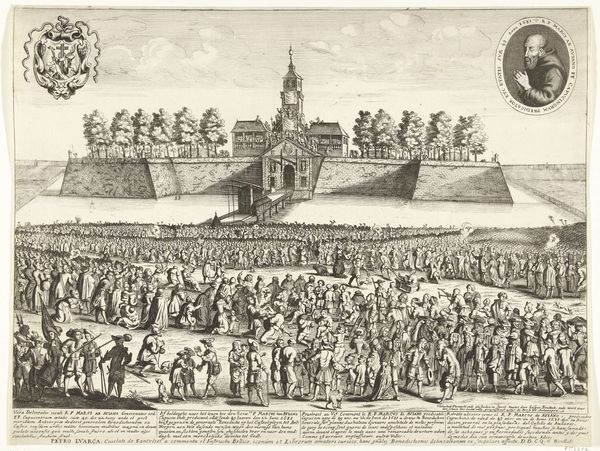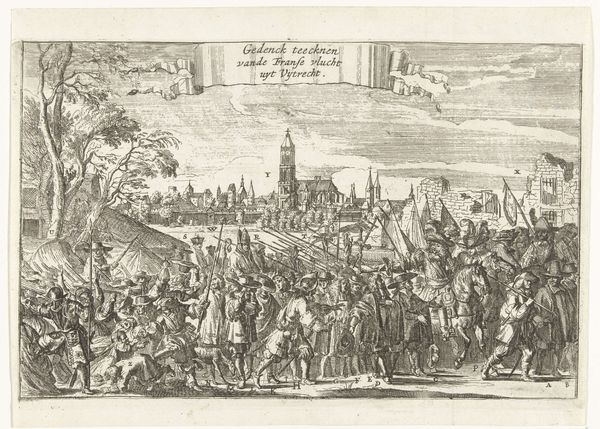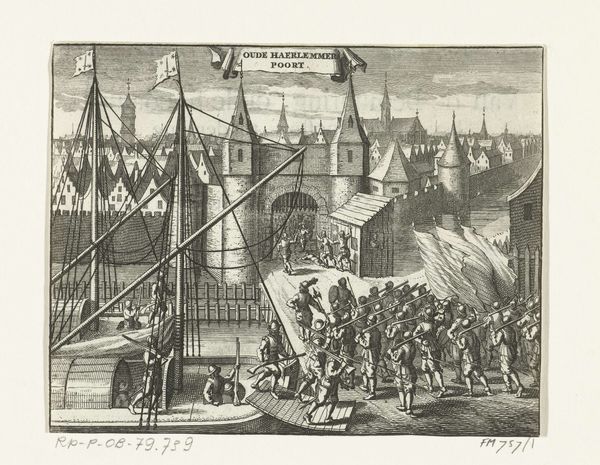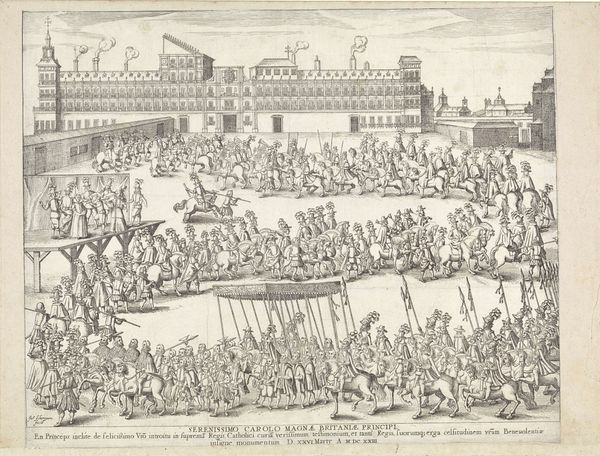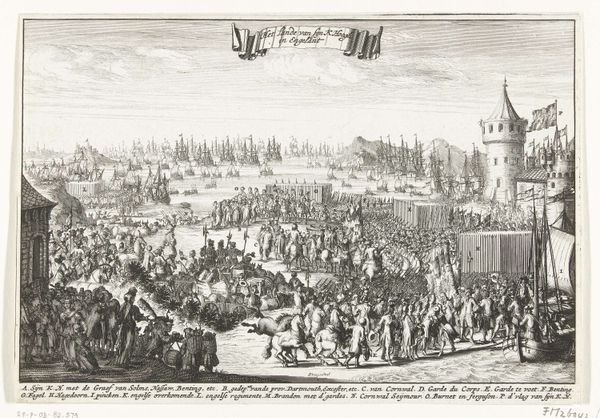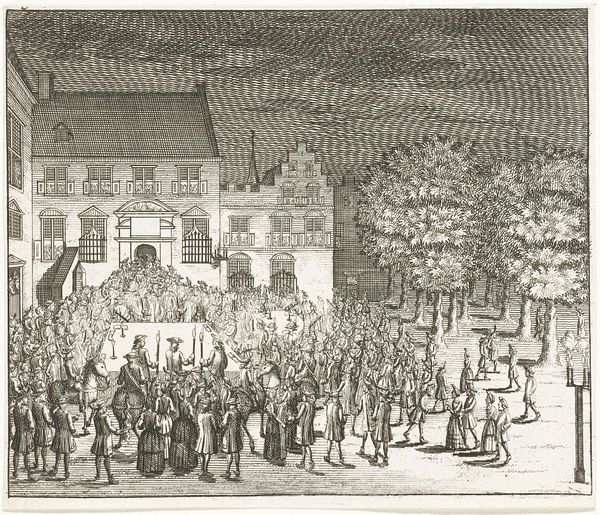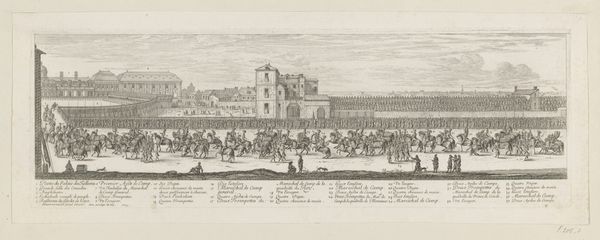
Intocht van aartshertog Ernst bij een stadspoort van Brussel, 1594 1594
pietervanderiborcht
Rijksmuseum
print, engraving
narrative-art
cityscape
history-painting
northern-renaissance
engraving
Dimensions: height 360 mm, width 530 mm
Copyright: Rijks Museum: Open Domain
Editor: We’re looking at Pieter van der Borcht's engraving from 1594, “Intocht van aartshertog Ernst bij een stadspoort van Brussel," which translates to "Archduke Ernst's entry at a city gate in Brussels.” The print depicts a grand procession, very ordered, entering through an imposing city gate. It seems to capture a moment of great pomp and authority. What strikes you about this piece? Curator: I'm drawn to the technique and its social implications. The precise, linear quality of engraving was instrumental in disseminating imagery. This print served as propaganda, crafting a specific image of Archduke Ernst’s rule, meant for mass consumption. Think of it – how many impressions could be made? How far could they travel? Editor: So the medium itself becomes part of the message? Curator: Precisely. The deliberate craft involved— the physical labor and time invested in the matrix, the paper, the printing process— highlights the desire to standardize and distribute a particular narrative of power and governance across different social strata. Editor: What about the city gate? Is that also relevant in terms of materials and society? Curator: Absolutely. The gate wasn't just an architectural element, but also a significant symbolic one, built using resources acquired from a specific system of commerce, labor, and consumption. The means to acquire, fabricate and control these resources would communicate more than just power. The Archduke literally passes *through* it; its construction and solidity serve as metaphor for a firmly controlled access to Brussels. Editor: That gives a whole new layer to the idea of "entry" in the title. Curator: Indeed. And thinking about that material reality contextualizes both the historical moment, and artistic intention. We can consider that everything in view, from the Archduke's horse, clothes, to even the print’s physical existence, are the result of production, consumption, and control of specific, crucial resources at a certain point in history. Editor: This has helped me appreciate the connection between artistic representation and real-world social structures so much more. Thanks! Curator: My pleasure! It’s about reading the object in terms of tangible existence, not simply symbolic intent.
Comments
No comments
Be the first to comment and join the conversation on the ultimate creative platform.
